Nice review, Vic - my excitement for the system is steadily increasing. Wednesday can't come soon enough!
Side Note - Love the tiny little Vita boxes, hate the MIA manuals.
|
|
See PixlBit's Review Policies

On 02/16/2012 at 11:29 PM by Vic Roman Home console quality gaming meets the handheld market. |

Mobile devices have put casual gaming at the frontlines of the handheld market, but Sony’s PlayStation Vita is a newly bred handheld beast with the power of current-gen gaming. It would be good to ask if Sony’s hardcore approach amongst the current casual gaming boom is a smart business move, but that can only be revealed in the near future. For now, we can only look at the Vita’s technical specs to judge the system. With that in mind, the Vita is a console with a lot of highs and only a few lows.
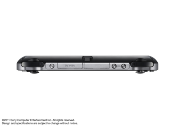
The first high you will notice is the physical build of the Vita. If the PSP was a teenager, the Vita would be a young adult. The Vita is the same basic design as the PSP, but it’s a little bit bigger, weighs a little more, replaces a “nub” with two joysticks, adds two cameras, and introduces touch capabilities to the front and back of the device. Despite the bigger size and weight, the Vita is actually more comfortable to hold for longer periods of time than the PSP.
The dual analog sticks are a welcome addition to the Vita, and are infinitely more functional and comfortable to use compared to the PSP’s nub. The 3DS slider pad is a little more comfortable to use due to it’s bigger radius, but the Vita’s analog sticks feel like they have more degrees of responsiveness; making it feel closer to holding a console controller. The d-pad, face buttons, and shoulder buttons all feel exactly as they did on the PSP – very comfortable and easy to reach.
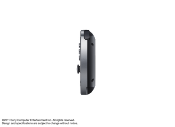
The most unique aspect of the Vita is its rear touch screen. It’s the only aspect of the system that hasn’t been seen on another device (ex: motion tilt, touch screens, and augmented reality are already on the 3DS and mobile devices), however it has yet to have any game changing moments for me. The game Little Deviants has proven that the tech is accurate through some rear pad focused mini-games, but there has been no moment in another title so far that has shown why it’s a control method that can improve gameplay. Right now, the rear pad feels more like a tacked on gimmick, but hopefully developers can find creative ways to use it in the future.
The Vita’s hub interface has had a drastic makeover, replacing the traditional PS3 and PSP menus with an app style layout similar to the iPhone or Android phones.While more visually appealing, I prefer the simplicity of the PSP menu because it is easy to navigate and keep organized. With only 8 or 9 viewable applications on each screen, navigating the Vita menus is much more cumbersome.

Despite my bias, I still like the Vita’s interface. Many of its features are borderline gimmicky - like swiping to close an app - but it all works very well. Even navigating the menus provides an entertaining user experience, thanks in part to the visually pleasing, slightly animated icons.
The launch titles have been fairly well-received for the Vita. Uncharted: Golden Abyss showcases the Vita’s ability to produce home console quality graphics, while also integrating touch controls within a traditional third-person shooter. Wipeout 2048 proves that ultra-fast racing with beautiful visuals can exist on the handheld market, while Rayman Origins demonstrates that a port of an HD console game can be identical on the Vita.
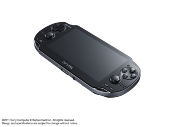
One aspect we can’t currently comment on is Remote Play. The Vita is able to remotely control a PS3, but there are currently no PS3 games available that legally allow remote play. However, the potential to play your PS3 games directly on a Vita is definitely exciting, so it’ll be interesting to see how it works once Sony gets it running properly. For now, the remote play functionality is a dud.
The first fault I noticed with the Vita is its low quality built-in cameras. When dealing with augmented reality the cameras get the job done, but produce grainy images that would not be worthy of any sort of video capture or photography.
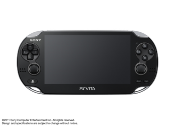
Another shortcoming is the Vita’s low battery life, which lasted just over 4 hours when I played a variety of offline and online games. I personally don’t mind the short battery life, but you won’t be able to make it through a long road trip with your Vita.
The true Achilles’ heel of the Vita is its pricing. Starting at $250 - $80 more than the current 3DS price - the Vita definitely isn’t a budget handheld. Also, expensive memory cards make the Vita exceptionally more costly. I currently have a 4GB memory card that retails for $19.99, and it barely holds any data. For example, I downloaded Rayman Origins along with two PSP titles and the memory card is already 3/4 full. In order to have a reasonable amount of storage space you would need the 32GB model, which retails at the high price of $99.99. If you’re on the fence about buying a Vita, keep in mind that the memory cards drastically increase the Vita’s price.
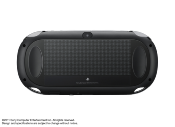
Another monetary investment to consider is the high cost of games, which retail from $30 to $50. For a handheld game, $50 is not cheap by any means, especially when it’s nearly the same price you would pay for an HD console title. Game prices added onto the high memory card price will surely put a dent in your wallet after the initial $250 Vita purchase.
Other than the low quality cameras and short battery life, there is no debating the high quality of technology that is built into the PlayStation Vita. The strong launch lineup, which includes Uncharted: Golden Abyss, Wipeout 2048, Rayman Origins, and Super Stardust Delta, ensures that consumers will have a variety of high quality titles to choose from. As long as money is not an issue for you, I recommend the Vita wholeheartedly. However, if you can’t afford to empty your wallet, you’re better off waiting for a significant price drop.
This review is based on the WiFi Vita model.

It’s been a long time since we’ve seen an entry in the Metroid Prime series - 18 years, in fact. It was 8 years ago that Metroid Prime 4 was originally announced and its development was more than a little turbulent. Initially developed by Bandai Namco, it was later scrapped completely and development was shifted back to Retro Studios to start the project over. In the end, Retro has delivered a solid new entry in the series, but one that doesn’t totally capture what originally made the series so compelling.
Comments